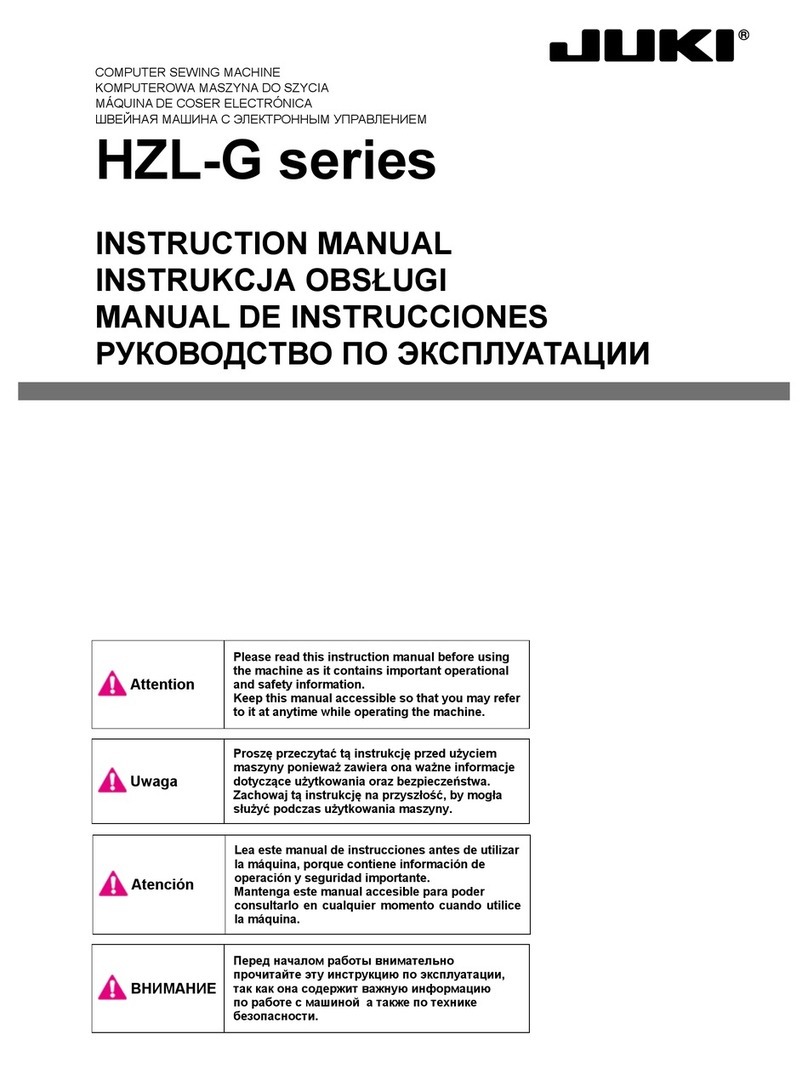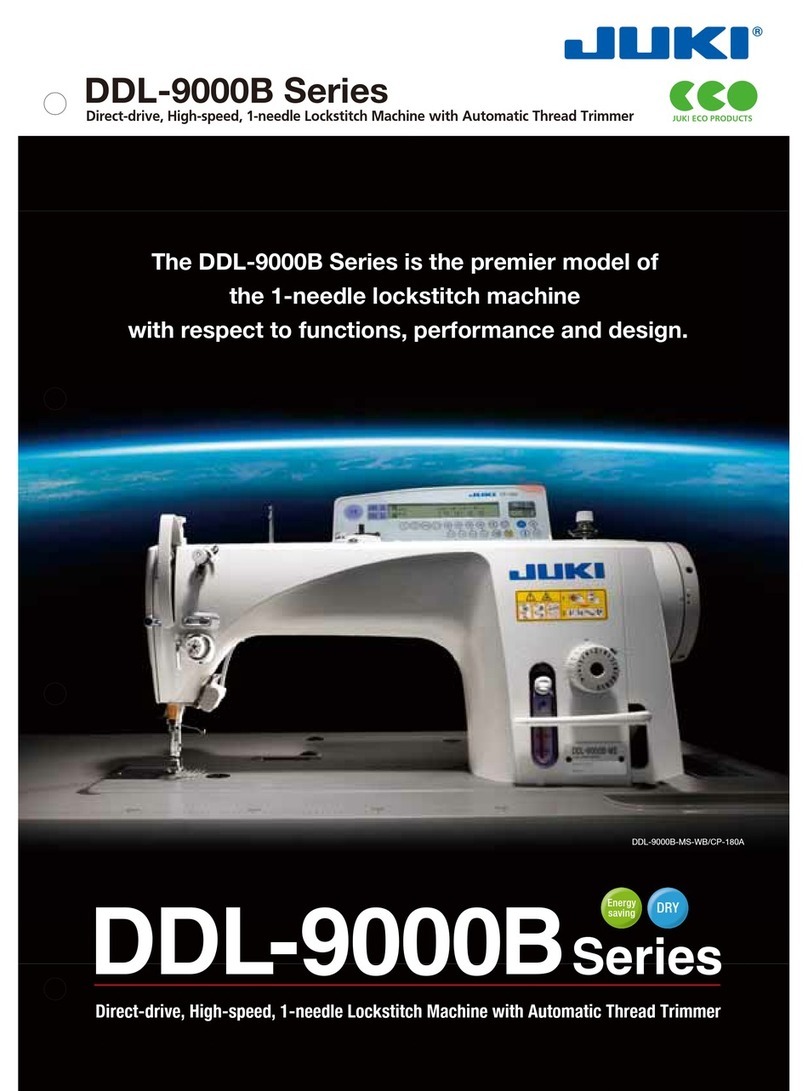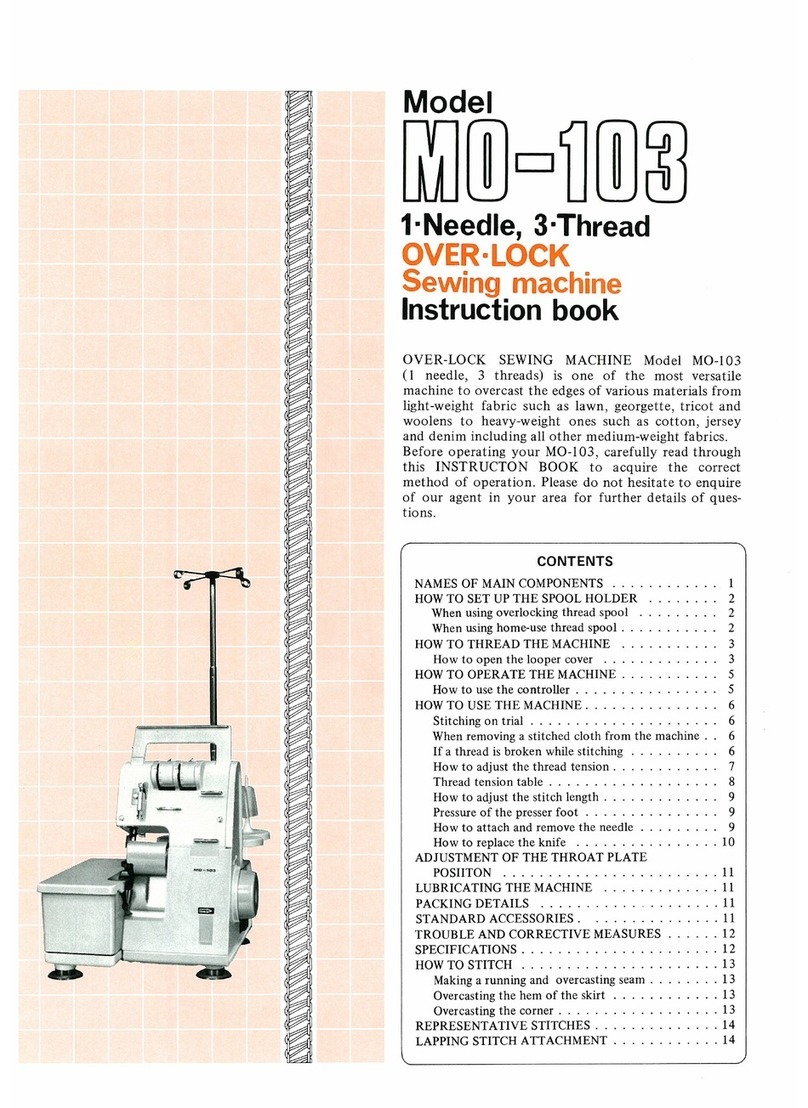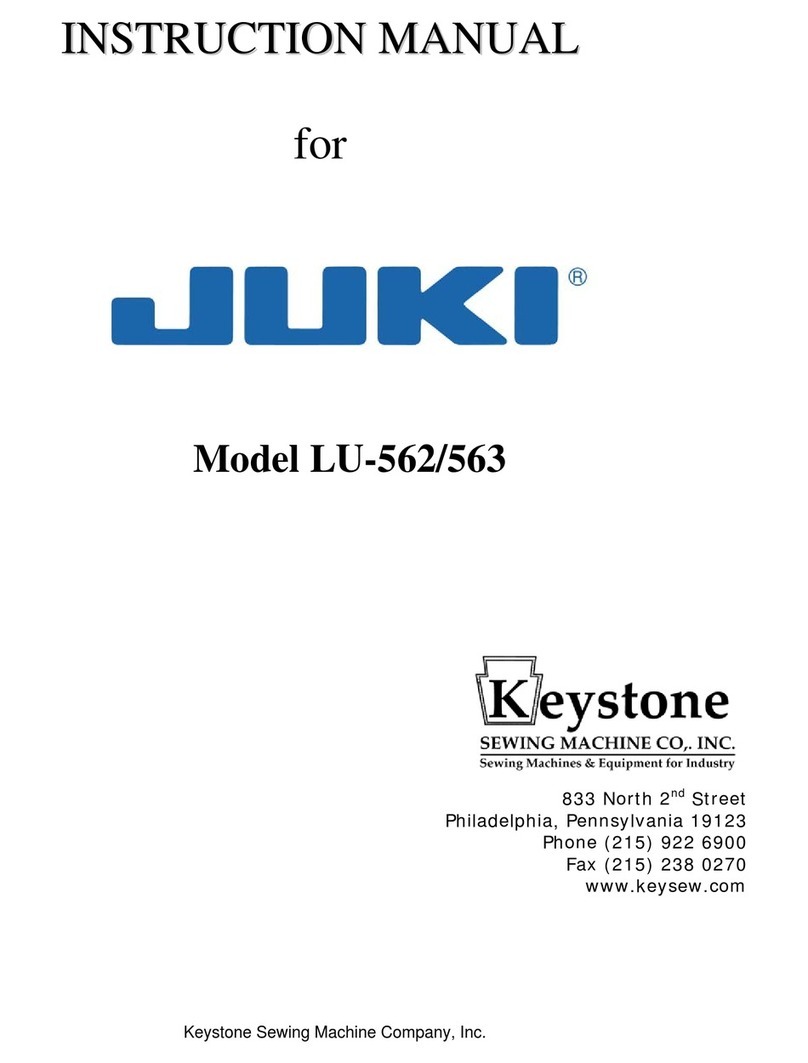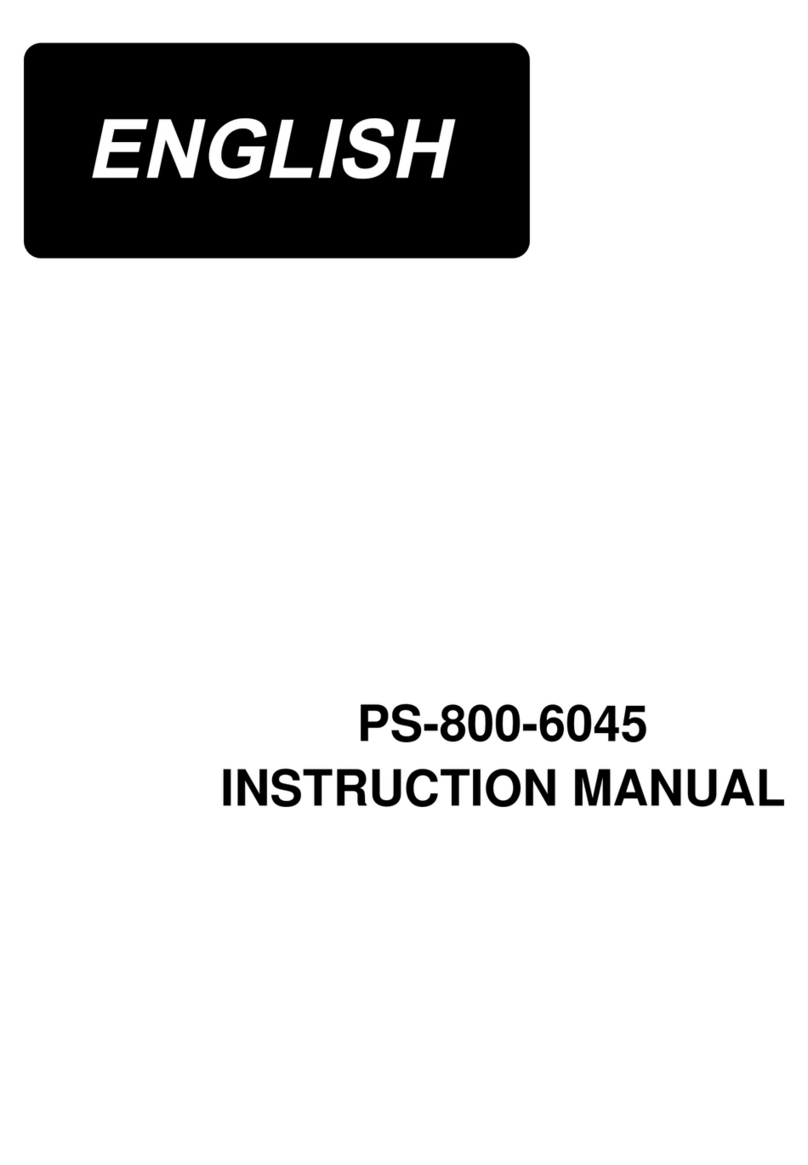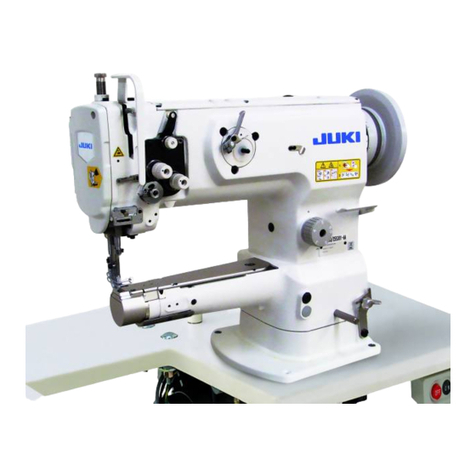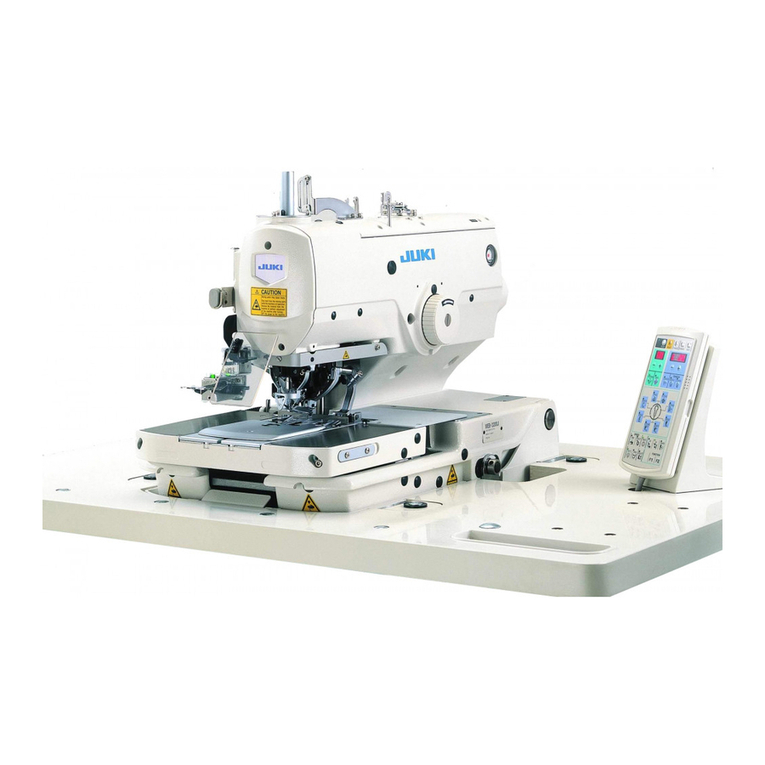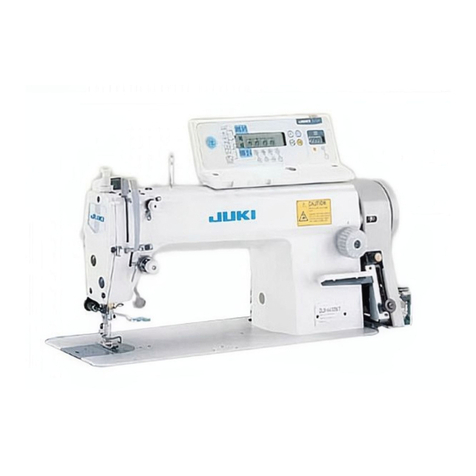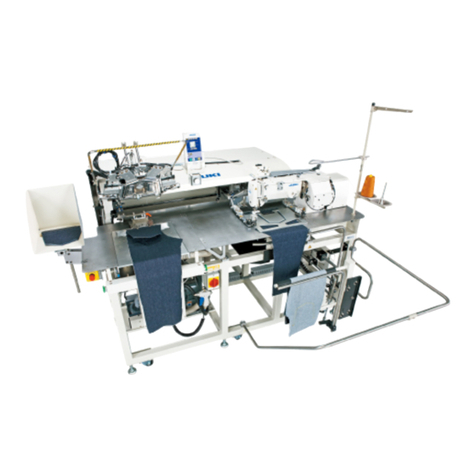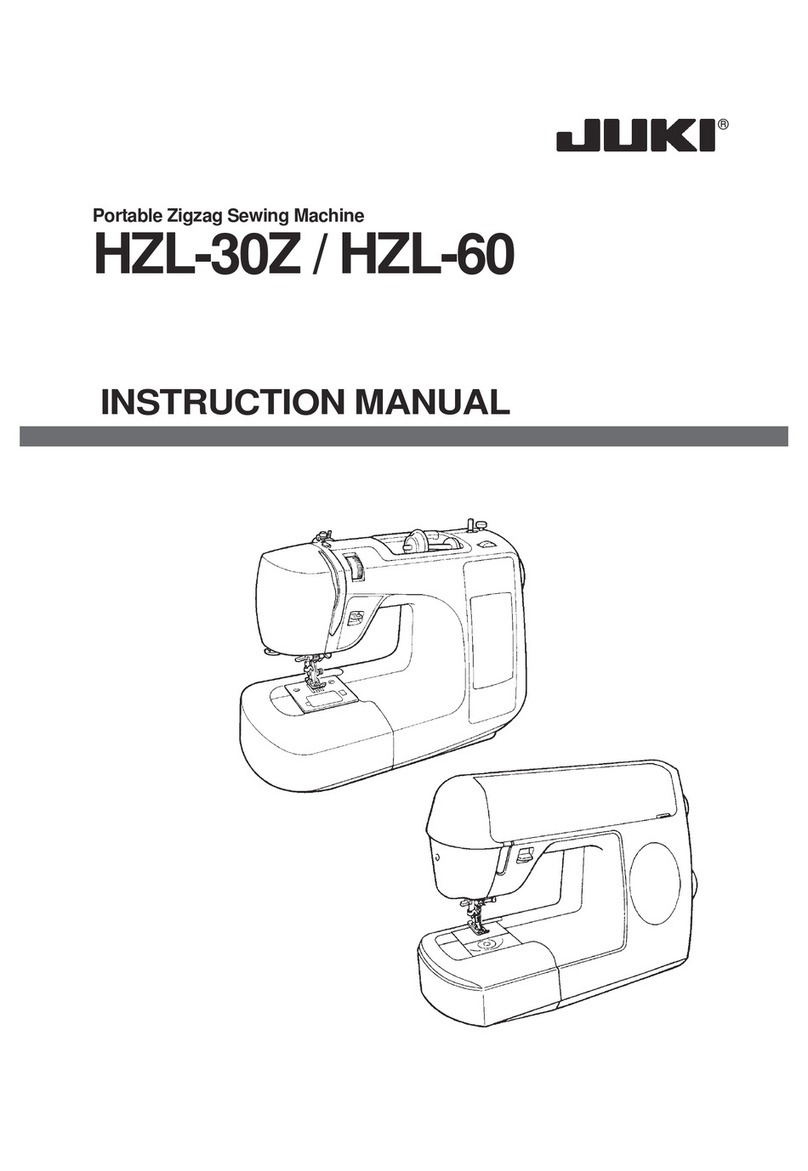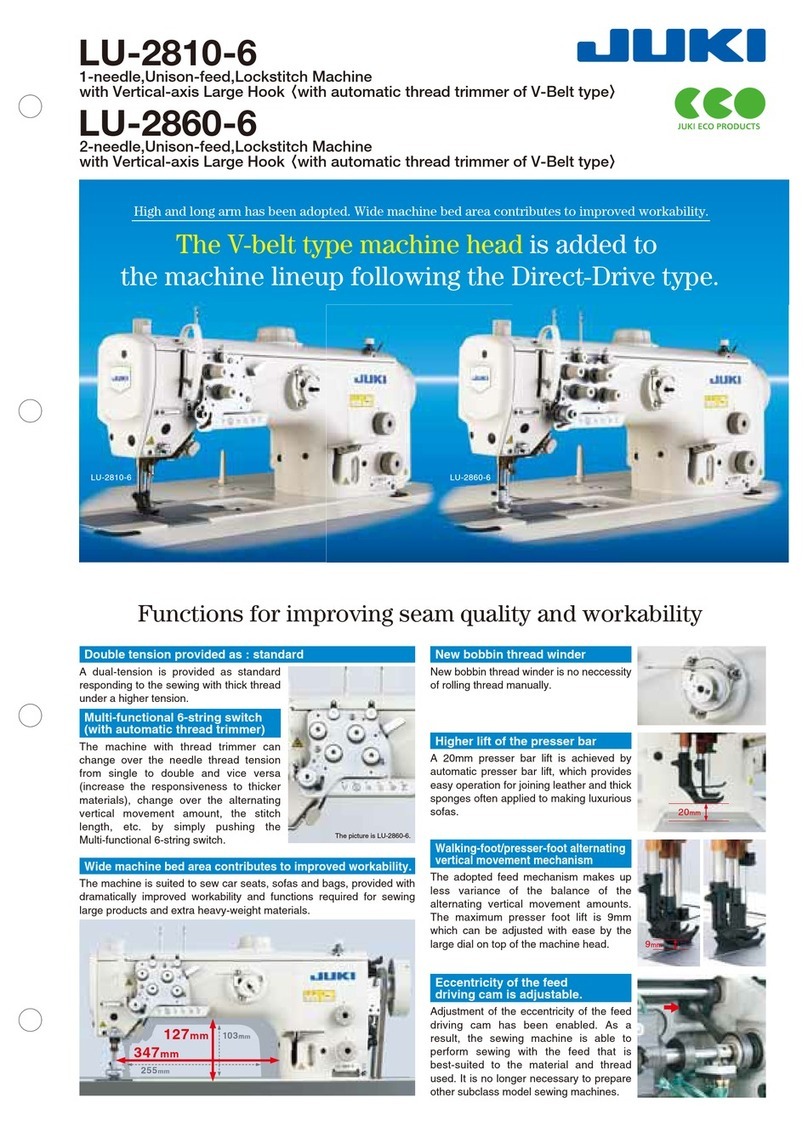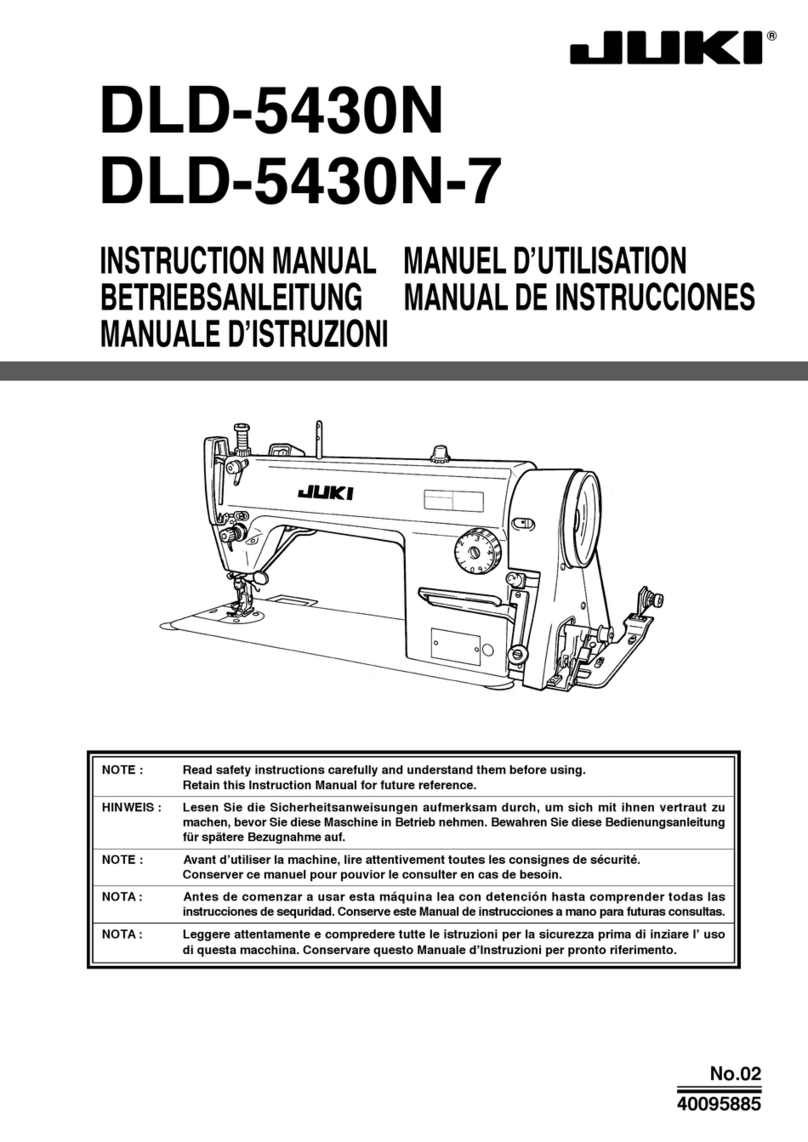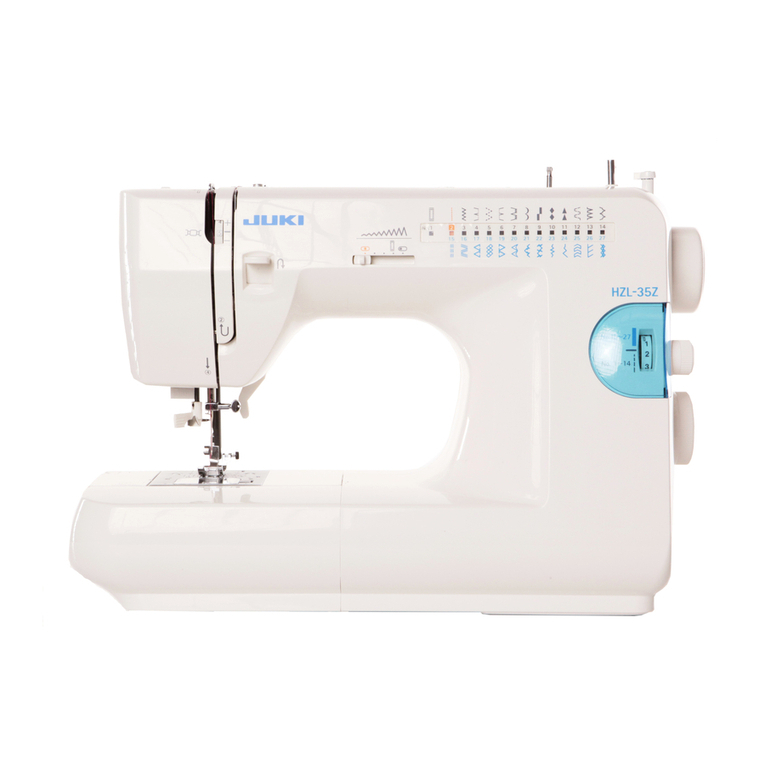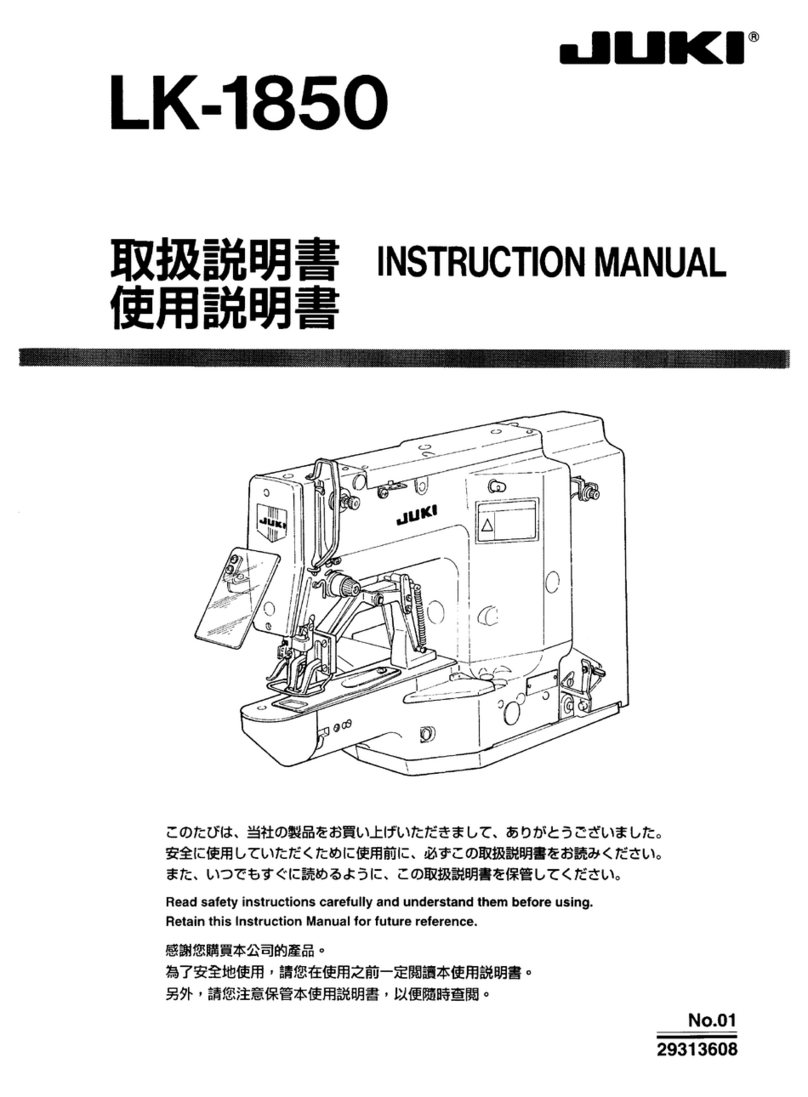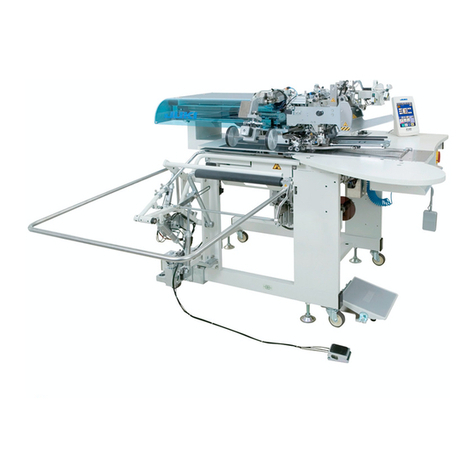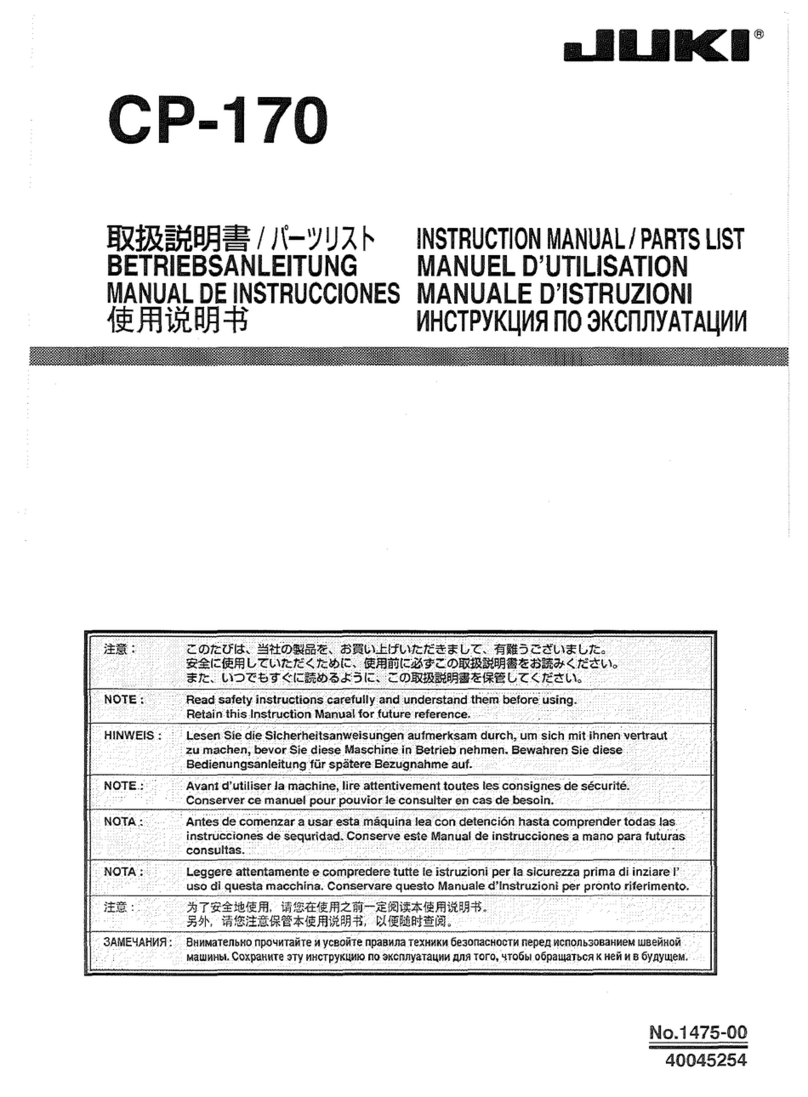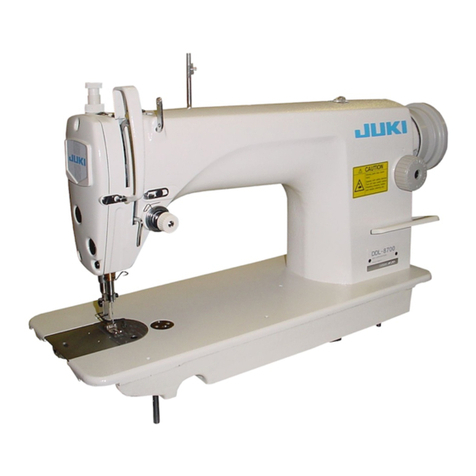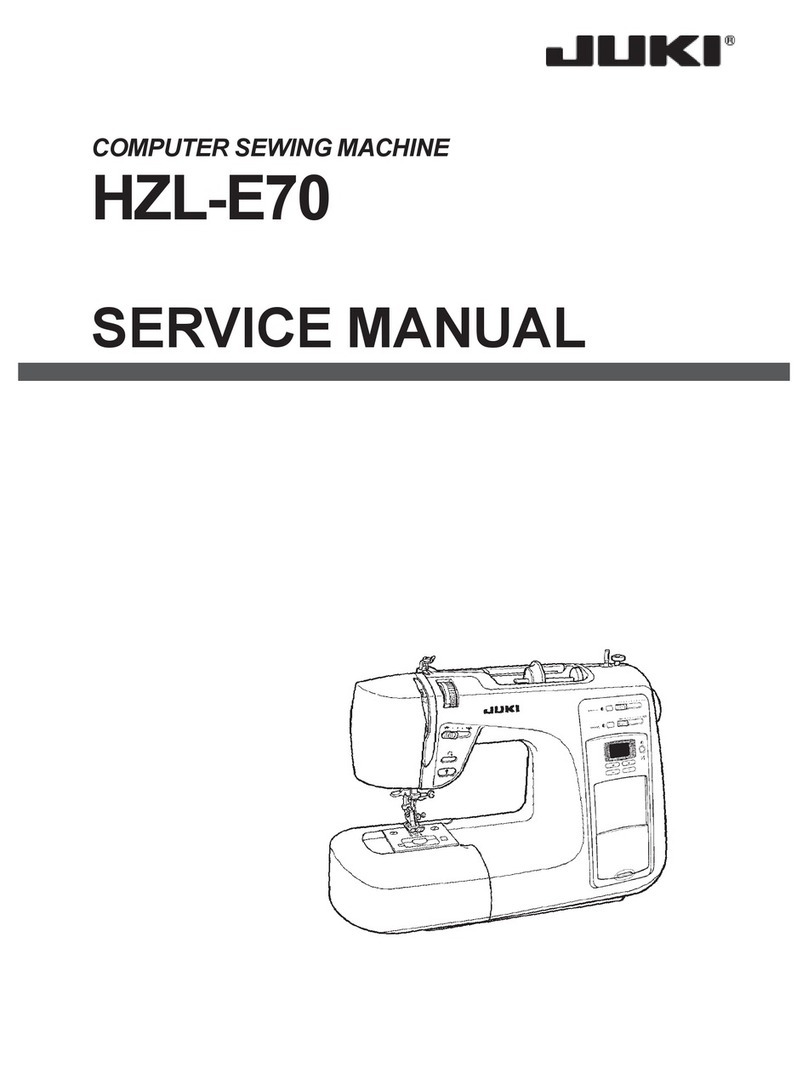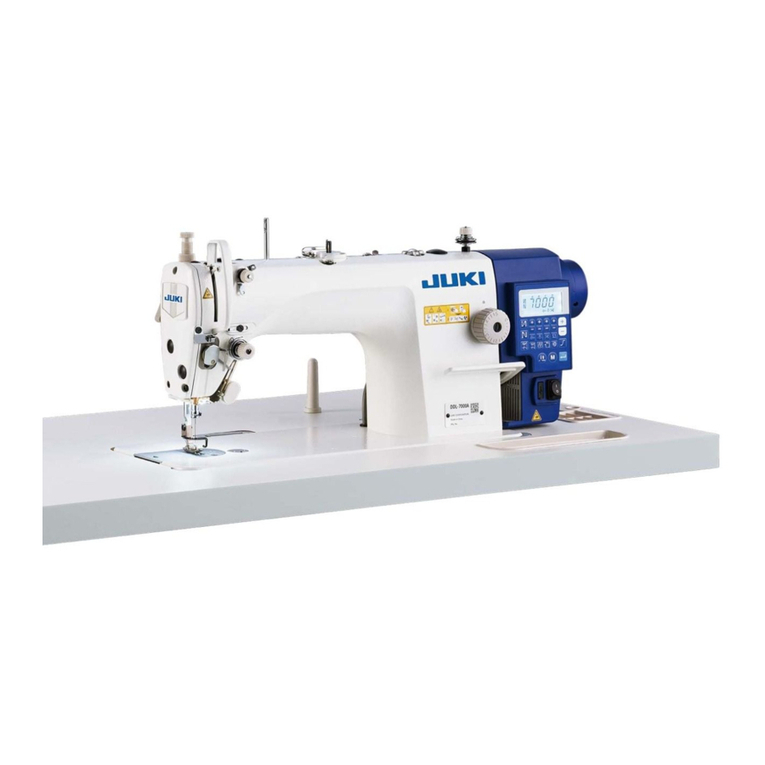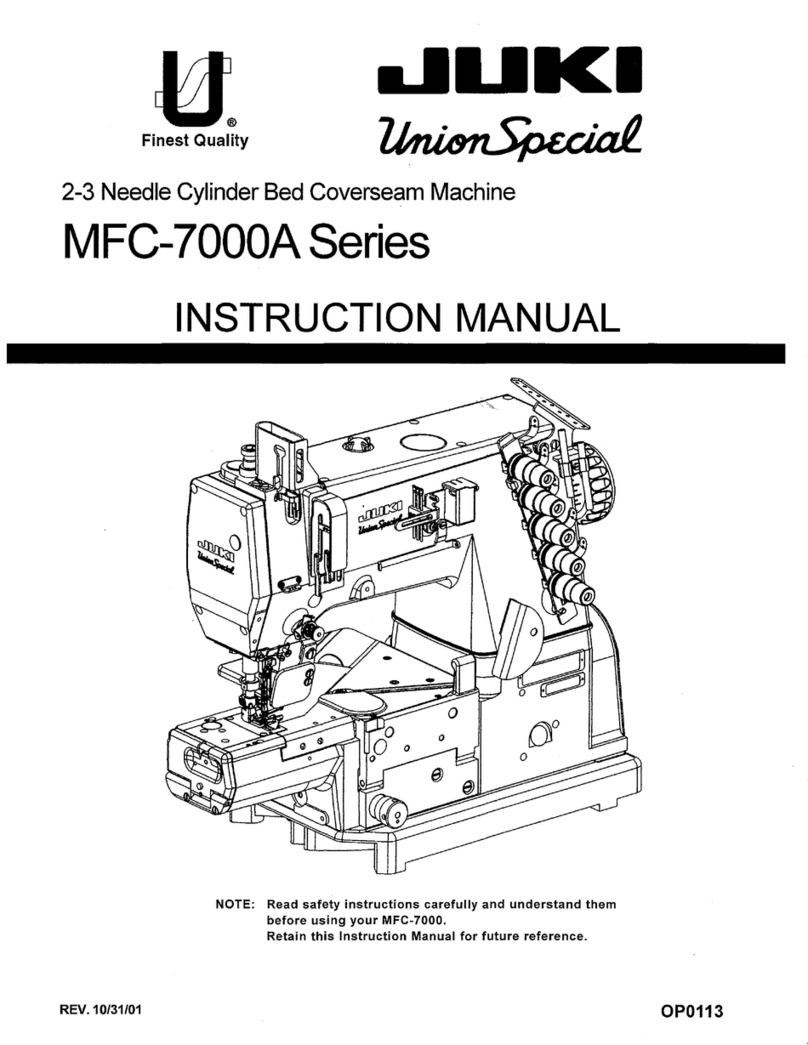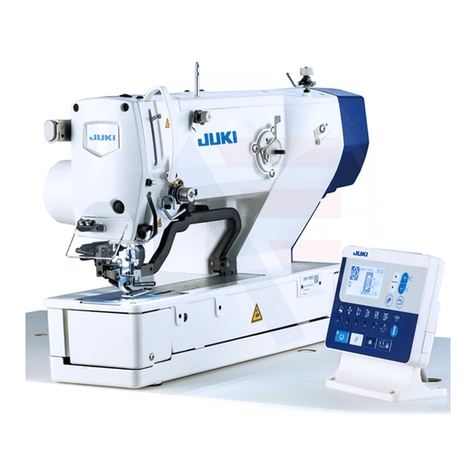
–1 –
No. Items Description
1 Model name 2-Needle, 2/3/4-Thread Overlock Sewing Machine (with
dierential feed adjusting)
2 Stitch choice 2 needles, 4 thread overlock
2 needles, 3 thread overlock
1 needle, 3 thread overlock
1 needle, 2 thread overlock
3 Sewing speed Up to 1,500 sti/min Rating 1,350±150 sti/min
4 Needle gauge Overlocking: 2.2 mm
5 Overedge width 2 needles, 4 thread: 4.5 to 7.0 mm
1 needle, 3 thread (right hand needle): 2.5 to 5.0 mm
1 needle, 3 thread (left hand needle): 4.5 to 7.0 mm
Roll hemming: 2.0 mm
Knife width 2.5 to 5.0 mm
6 Thread sliding segment The thread sliding segment is in synchronism with the lower
knife at its standard position.
The amount of travel of the thread sliding segment must be
nely adjustable with the overedge width adjustment knob.
7 Stitch length 1.0 to 4.0 mm (Standard 2.5 mm)
8Dierential feed 1:0.7 to 2
9 Needle bar stroke 29.4 mm
10 Presser foot height 5.8 mm to 6.0 mm
11 Presser foot height by the knee lifting lever 6.0 mm
12 Presser foot height by the micro lifter (*1) 2.5 mm
13 Feed dog height 1.3 mm (This side end of the sub feed dog P = 2.5 mm;
dierential feed ratio: 1:1)
14 Needle system (Japan) ORGAN needle HA×11SP # 11 (Standard) to # 14
Needle system (Overseas) SCHMETZ (130/705H 15X1H) # 80
15 Number of needles Max. 2
16 Number of threads to be used Max. 4
17 Needle threader Operated by the manual lever
18 Looper threader Automatic threading by the air pump
19 Air pump Piston pump driven by the motor
Motor: DC 12V
20 Power switch Rocker switch
21 Light LED 5V x 2
22 Motor 100V : 100 to 120W
110/120V : 100 to 120W
220 to 240V : 100 to 130W
23 Foot control No-heat method (semi-conductor control type)
24 Driving system Timing belt drive
25 Machine size 350 mm (W) × 310 mm (D) × 340 mm (H)
26 Machine weight 10 kg
1SPECIFICATIONS
* 1: Only for MO-2500 types
